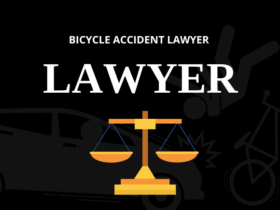Introduction Of 1 Million Lump Sum: Is it Efficient Or We Hire an Insurance Lawyer
1 Million Lump Sum: Is it Efficient Or We Hire an Insurance Lawyer. The core benefits of the cash value being a safe liquid tax-free area to position money but you do not like the idea of payments if I could just throw a big pile of money in there let it sit and grow to access it when I want and I’ve got a death benefit with it boy would that be great.
Lump sum policies
I just throw a big pile of money in and be done with it forever so the answer is yes but there are some things we want to be aware of are lump sum policies one how do I maximize the cash value what is the most efficient method to fund a policy because it is often not just a one-time lump on payment.
But then two putting the money in use so it’s one thing to maximize the growth rate the internal rate of return a lot of people are interested in that but then I’ve got a high yield savings asset how do I use the money if I want to borrow against it invest in real estate in my business whatever it might be.
We are going to look at a 50-year-old individual with a 1 million lump sum so he’s interested in a whole life insurance policy for the core benefits primary focus is cash value being a safe liquid tax-free area to position money now on the tax-free piece he’s interested in a non-me so whenever we’re looking at a lump sum policy you do have the option to go with a modified endowment contract.
We look at lump sum funding scenarios
Which gives you a tax-free death benefit the cash value growth is great but we can’t access that cash value we can but we have to deal with taxes we don’t want that so we’ve got a non-mec policy and the mech limit is important to be aware of in the next several studies because when we look at lump sum funding scenarios being aware of what.
That mech it is quite important it’s always important but particularly with lump sum policies so the specific question is this can i make a one-time payment and be done with it i love the idea of a whole life insurance policy but i do not want ongoing payments we get this quite a bit some people like the option to be able to continue to make payments.
If they want however a lot of people are attracted to the idea of funding a policy for a short period of time so the answer to this question can you make a one-time payment yes but it’s not always the most efficient strategy so a question to ask yourself with a whole life insurance policy is how long is the premium due most.
Make a one-time lump sum payment
Whole life insurance policies are tied are titled whole life 100 or whole life 121 if you have a policy or seen illustration that reads paid up at 100 or whole life 100 what that represents is that the minimum premium piece is due up until the age of 100. now not many people fund it that long but that’s how long premiums are payable so if someone wanted to make a one-time lump sum payment say.
It’s a million dollars would the minimum premium piece still be due up until the age of 100. the answer would be yes if I went with an age 100 policy with that said so yes the premium would be due but I do not have to pay it so some things to be aware of number one is what is called a premium offset this is an option where my premiums still do.
But i can elect to have the dividends and interest the earnings on in the policy pay my premium first and then after it’s covered any earnings left over are reinvested into my cash value so this is a nice option to elect if I do not want to pay the policy and I’m not taking a loan internally to cover it I don’t want to do that all the time sometimes it makes sense but here premium offset allows.
Whole life 100 policy that’s payable up until age 100
The dividends and interest to pay my premium for me that’s an option b is what is referred to as a reduced paid up option this guy will eliminate the premium altogether so for instance if i have a whole life 100 policy that’s payable up until age 100 and i elect a reduced paid-up option to say at year 10 well at that point in time the premium’s gone we eliminate it all together so the policy is no longer payable until age 100.
Once I elect a reduced paid-up option I cannot add any money into premium or pua payments I can borrow and repay all day long but I cannot add additional dollars that with the reduced paid-option so this is a nice option to maximize the internal rate of return the reduced paid-up e, especially when we look at the guaranteed values, however, we do have to be aware of the mech rules here so. You Can Also Read Do You Know The Most Efficient Way to Get Money into a Life Insurance Policy.
We talk about the mech limit quite a bit it has a direct relationship to the death benefit and the mech limit is the maximum dollar amount I can pay into a policy each year and still have the IRS view my life insurance policy as life insurance and reap the tax-free benefits, not a modified endowment contract and then I have to deal with taxation concerning the gains.
The first seven years of a life insurance policy
If I want to access my cash value so another name for the mech test is what we refer to as the seven pay test another name for it is the seven pay premium test it has to do with the first seven years of a life insurance policy how I like to describe this sometimes is the first seven years is when the vice grips are very tight from the IRS on life insurance policies and if.
I drop that death benefit during the first seven years often I can trigger a modified endowment contract my policy will become a mech so how I prevent it is often by not reducing the death benefit until year eight very easy stuff to follow right my point where I’m going with this is a reduced paid-up option almost every single time will result in a death benefit reduction so if I were to execute a reduced paid-up option.
Let’s say I make a one-time payment and then go reduced paid up year two you could do that but that policy will turn into a mech almost every single time often what I have to do is if i’m going with a one pay throw that one million dollars in elect a premium offset years two through seven meaning the policy is going to have to pay for itself years two three four five six and seven and then.
I can execute a reduced paid up in year eight so that’s six consecutive years where i’m not paying the premium it’s paying for itself through dividends and also the guaranteed rate i’ll often refer to this as drag on the policy it’s not that efficient especially if you run a very conservative illustration looking at just the guaranteed values.


























Leave a Reply